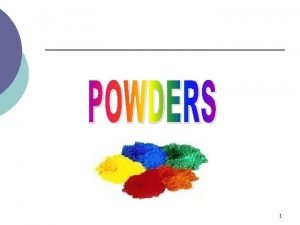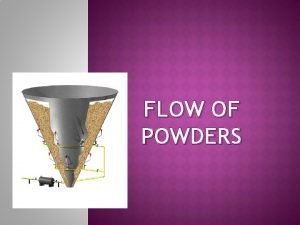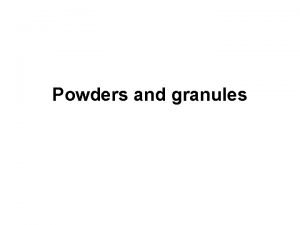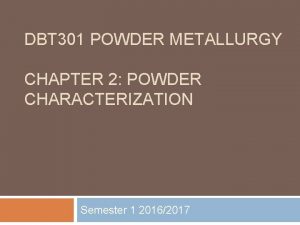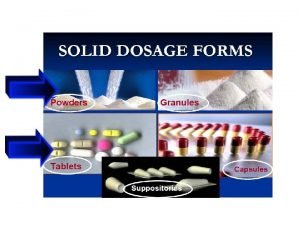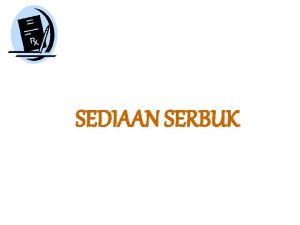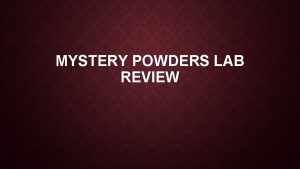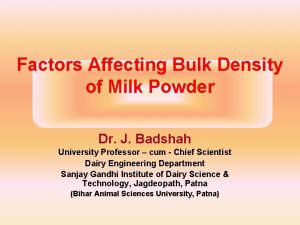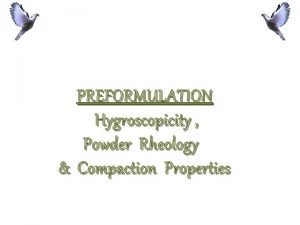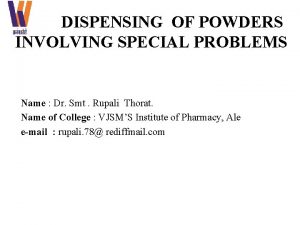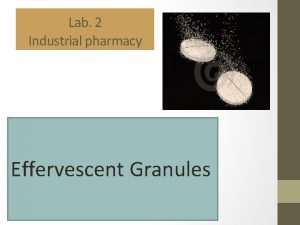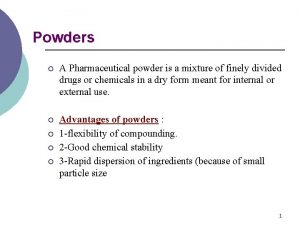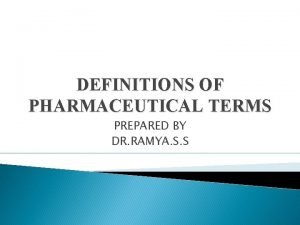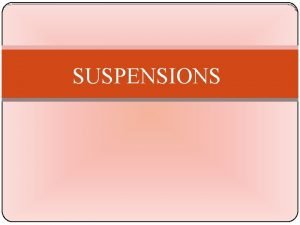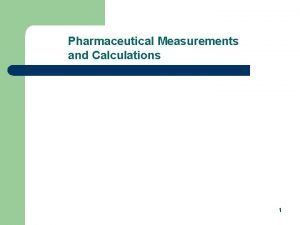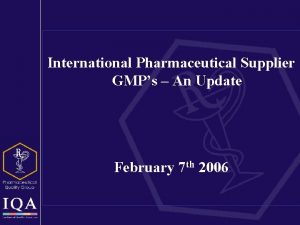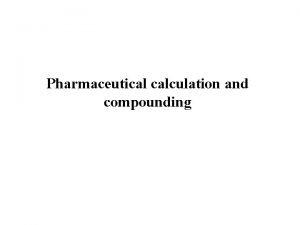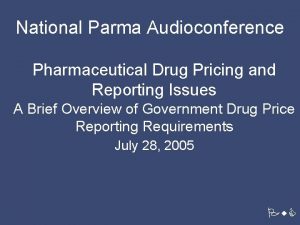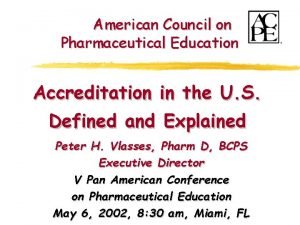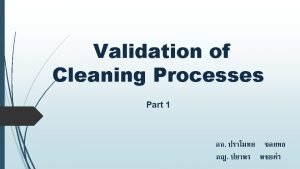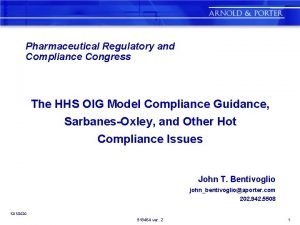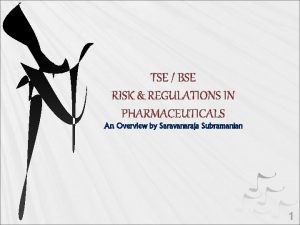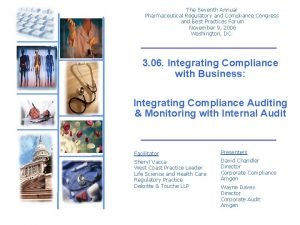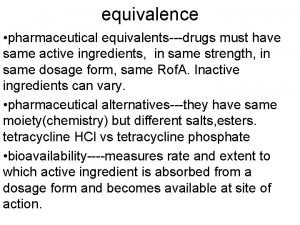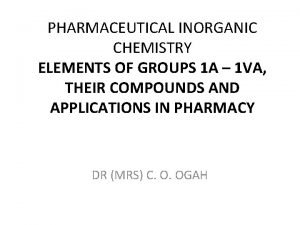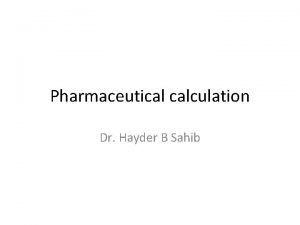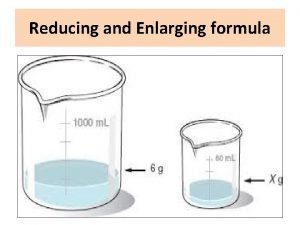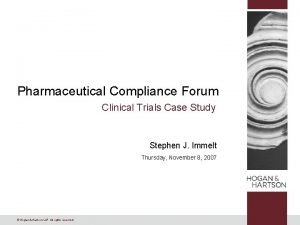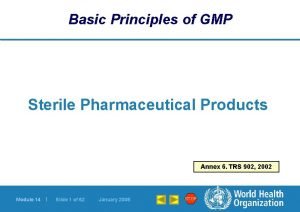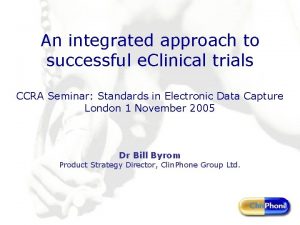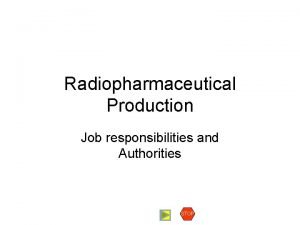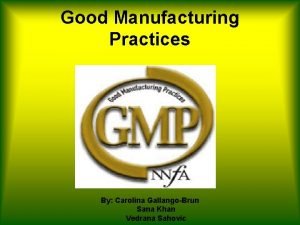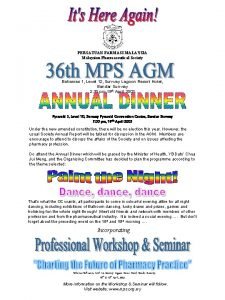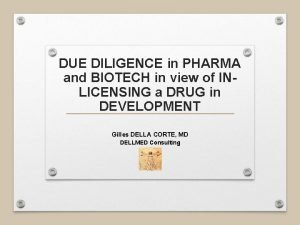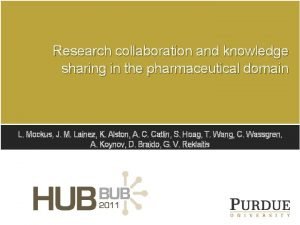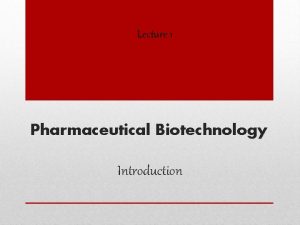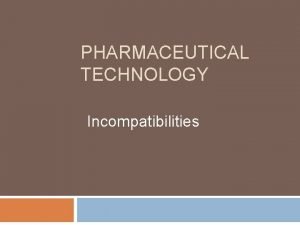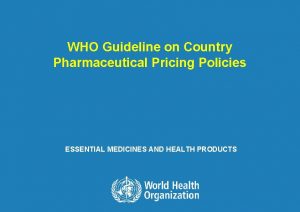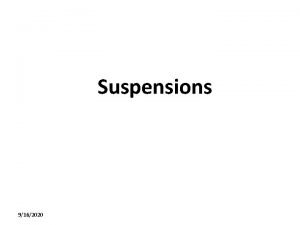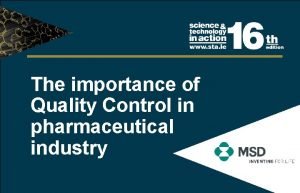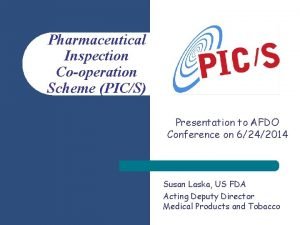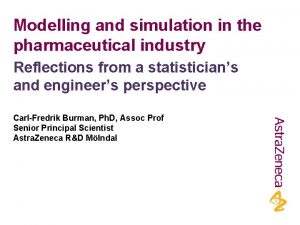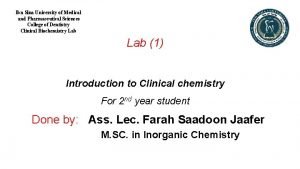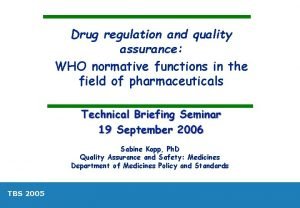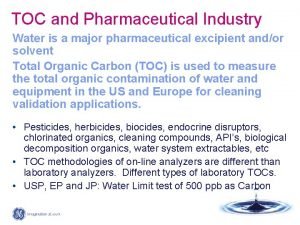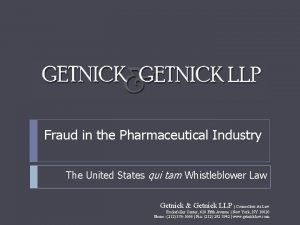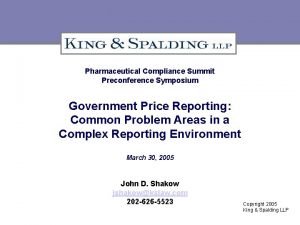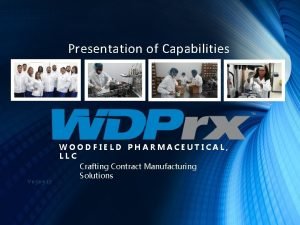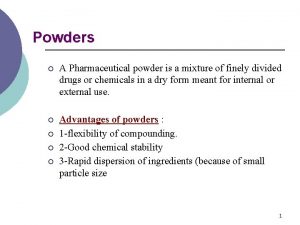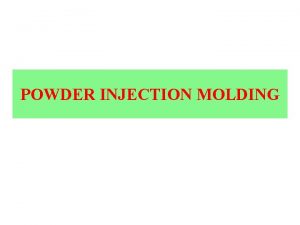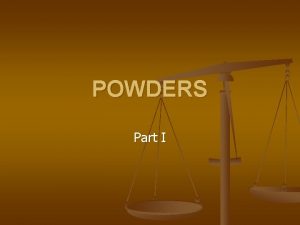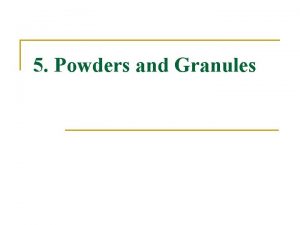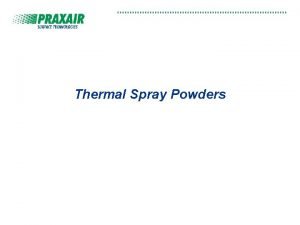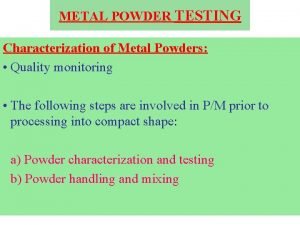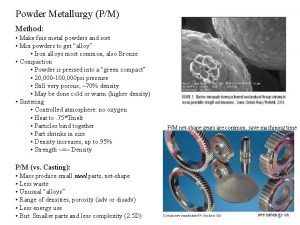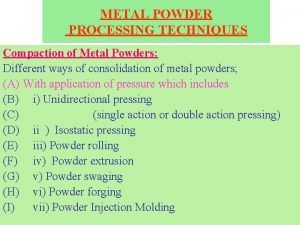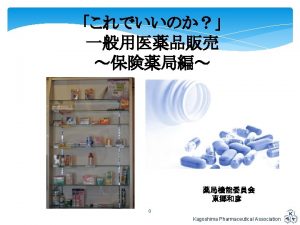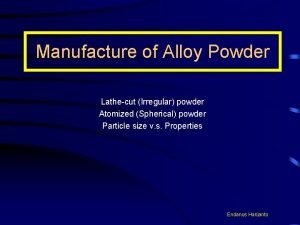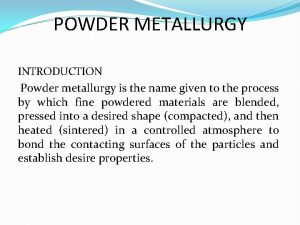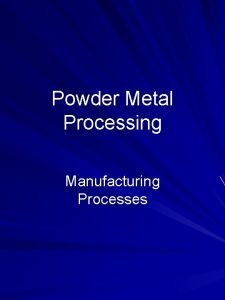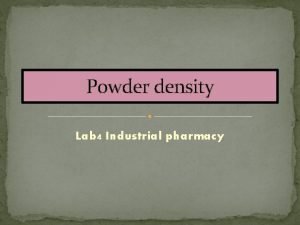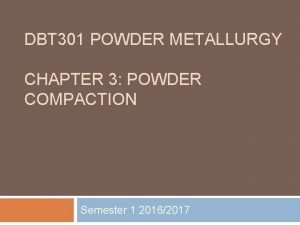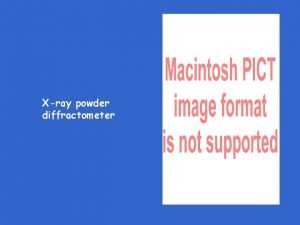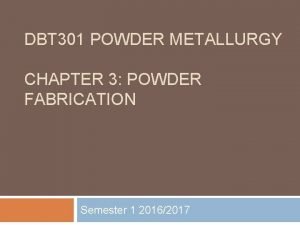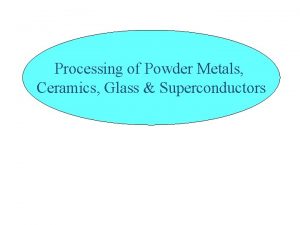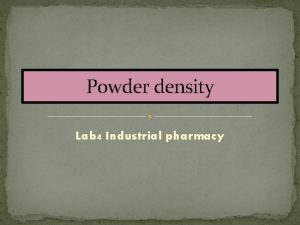1 Powders A Pharmaceutical powder is a mixture


























































- Slides: 58

1

Powders ¡ A Pharmaceutical powder is a mixture of finely divided drugs or chemicals in a dry form meant for internal or external use. 2

Advantages of Powders: ¡ ¡ Good chemical stability compared with fluids useful for bulky drugs with large dose, e. g. indigestion powder. Easy to swallow even in large bulk, especially if mixed with drink food (useful for stomach- tube feeding) The smaller particle size of powders causes more rapid dissolution in body fluids, increases drug bioavailability, and decreases gastric irritation compared with tablets 3

Disadvantages of Powders 1. Patient may misunderstand the correct method of use. Without clear instruction, patients may inhale through the nose a drug intended for oral administration. In oral administration, it may have to be clear whether the drug has to be dissolved first in water or taken as it is. 4

Disadvantages of Powders 2. It is undesirable to take bitter or unpleasant tasting drugs by oral administration. Many herbal drugs (mainly infusions in boiling water) have very bitter tastes. To overcome the unpleasant taste of the extracts, it was often told that “bitter medicine is better medicine. ” This may not necessarily be true. 5

Disadvantages of Powders 3. It is difficult to protect powders containing hygroscopic, deliquescent (tending to melt or dissolve in humid environment), or aromatic materials from decomposition. 6

Disadvantages of Powders 4. Uniform, individually wrapped doses of powders (sachets) are required and this may increase the manufacturing expense. (It is possible to include a spoon in a packet of powder drug. This may result in inaccurate amount of drug delivered). 7

Disadvantages of Powders 5. Powder must be a homogeneous blend of all of the components and must be of the most advantageous particle size. The particle size of a drug influences the rate of solubility in water. It may also influence the biological activity of a drug 8

Types of Powders 1 - Divided powders - packets - cachets - capsules 2 - Bulk (Undivided) powders - dusting powder - effervescent powder - antacids, laxatives, dietary nutrient supplements…. 9

¡ ¡ Oral divided powder may contain one or more active ingredients together with an inert diluent to produce a minimum quantity of 120 mg. Oral undivided powder are usually a simple mixture of the prescribed medication without additional ingredients. 10

Particle Size of Powders ¡ United States Pharmacopeia (USP) classify powders as: very coarse, moderately coarse, fine, and very fine. ¡ These are related to the proportion of powder that is capable of passing through the openings of standard sieves of varying fineness in a specified period while being shaken, generally in a mechanical sieve shaker. 11

¡ Very coarse (No. 8): All particles pass through a No. 8 sieve and not more than 20% pass through a No. 60 sieve. ¡ Coarse (No. 20): All particles pass through a No. 20 sieve and not more than 40% pass through a No. 60 sieve. Moderately coarse (No. 40): All particles pass through a No. 40 sieve and not more than 40% pass through a No. 80 sieve. ¡ 12

¡ ¡ Fine (No. 60): All particles pass through a No. 60 sieve and not more than 40% pass through a No. 100 sieve. Very fine (No. 80): All particles pass through a No. 80 sieve. There is no limit to greater fineness. Granules fall within the range of 4 - to 12 -sieve size, although granulations of powders prepared in the 12 - to 20 sieve range are sometimes used in tablet making. 13

Effects of Particle Size ¡ Dissolution rate of particles intended to dissolve; drug micronization can increase the rate of drug dissolution and its bioavailability ¡ Suspendability of particles intended to remain undissolved but uniformly dispersed in a liquid vehicle (e. g. , fine dispersions have particle approximately 0. 5 to 10 μm) 14

Effects of Particle Size Uniform distribution of a drug substance in a powder mixture or solid dosage form to ensure dose-to-dose content uniformity. ¡ Penetrability of particles intended to be inhaled for deposition deep in the respiratory tract (e. g. , 1 to 5μm). ¡ Lack of grittiness of solid particles in dermal ointments, creams, and ophthalmic preparations (e. g. , fine powders may be 50 to 100 μm in size). ¡ 15

Particle Size Determination ¡ Sieving Particles are passed by mechanical shaking through a series of sieves of known and successively smaller size and the proportion of powder passing through or being withheld on each sieve is determined (range about 40 to 9, 500 μm, depending upon sieve sizes). 16

Coulter Counter Coulter counter determines the volume distribution of particles suspended in an electrolytecontaining solution. When a particle passes through a small orifice, it blocks the electric current. The information on particle volume is used for calculating particle size assuming a spherical shape. 17

Other methods Microscopic analysis (0. 2 to 100 m) ¡ Sedimentation Rate (0. 8 to 300 m) ¡ Light Scattering (0. 2 to 500 m) ¡ Permeability methods (>1 m) ¡ Laser diffraction analysers(0. 02 to 2000 m) ¡ Laser holography (1. 4 to 100 m) ¡ Electronic particle counters ¡

Preparation of Powders 1 - Reduction of particle size of all ingredients to the same range to prevent stratification. 2 - Sieving. 3 - Weighing of each ingredient. 4 - Mixing. 5 - Packaging. 19

Reduction of Particle Size The manually operated procedures are trituration, pulverization and levigation. 1 - Trituration: is used to comminute( reduce particle size) & to mix powders. 1 -A porcelin preferred than glass morter. 2 - A glass morter is preferrable for chemicals that stain a porcelin. When granular or crystalline materials are to be incorporated in to powdered product , these materials are comminuted individually and then blended together in the morter. 20

2 - Pulverization Substance are reduced& subdivided with an additional material ( i. e solvent) that can be removed easily after pulverization is complete. * This technique is applied to Substances which are gummy and tend to reagglomerate or which resist grinding. As camphor which is gummy, so addition of alcohol or other volatile solvent can be reduced readily to a fine powder. Similarly, iodine crystals may be comminuted with the aid of ether. In both instances the solvent is permitted to evaporate and the powdered material is recovered 21

3 - Levigation In this process A- paste is first formed by the addition of a suitable non solvent to the solid material. B-Particle-size reduction then accomplished by rubbing the paste in a mortar with a pestle or on an ointment’ slab using a spatula. 22

Methods of Powder Mixing 1 - Mechanical Mixing 2 - Hand Mixing: 2. 1 - Spatulation (spatula + tile) 2. 2 - Trituration (mortar + pestle) 2. 3 - Tumbling (wide mouth closed container) 23

Mixing of powders Large-Scale Mixing Equipment The ideal mixer should 1 - produce a complete blend rapidly to avoid product damage. 2 - It should be cleaned and discharged easily 3 - be dust-tight 4 require low maintenance and low power consumption. 24

Small-Scale Mixing Equipment 1 - Mortar and pestle * The pharmacist most generally employs the mortar and pestle for the small-scale mixing * The mortar and pestle method is a single operation. Thus, it is particularly useful where some degree of particle-size reduction as well as mixing is required as in the case of mixtures of crystalline material. 25

Small-Scale Mixing Equipment 2 - Spatulation The blending of powders with a spatula on a tile or paper used sometimes for small quantities or when the mortar and pestle technique is undesirable. It is not suitable for large quantities of powders or for powders containing one or more potent substance because homogenous blending may not occur. 26

Small-Scale Mixing Equipment 3 - Sieving usually is employed as a pre-or post-mixing method to reduce loosely held agglomerates and to increase the overall effectiveness of blending process. 27

Small-Scale Mixing Equipment 4 -Tumbling ¡ Powder is mixed in rotating chamber. ¡ Mixing is thorough but time consuming. Mostly used in industry 28

Extemporaneous Techniques 1. Use of geometric dilution for the incorporation of small amounts of potent drugs Geometric dilution: Entire quantity of potent drug (x volume) + (x volume) of the diluents + (2 x volume) of the diluents + (4 x volume) of the diluents………repeated until all the diluents are used. 29

Extemporaneous Techniques 2. Reduction of particle size of all ingredients to the same range. 3. Sieving when necessary to achieve mixing or reduction of agglomerates, especially in powders into which liquids have been incorporated. 4. Heavy trituration, when applicable, to reduce the bulkiness of a powder. 5. Protection against humidity, air oxidation and loss of volatile ingredients. 30

Powders are prepared most commonly either as: 1 - Divided powders and bulk powders which are mixed with water prior to administration 2 - Dusting powders which are applied locally. 3 - Dentifrices 4 - Insufflations 31

Divided Powders Are dispensed in the form of individual doses and generally are dispensed in papers, properly folded (chartulae). They also may be dispensed in metal foil, small heatsealed plastic bags or other containers. 32

Divided Powders - After weighing, comminuting and mixing the ingredients, the powders must be divided accurately into the prescribed number of doses. In order to achieve accuracy consistent with the other steps in the preparation, each dose should be weighed individually and transferred to a powder paper. Following completion of this step the powder papers are folded. 33

Powder Papers - Four basic types of powder papers are available. 1. Vegetable parchment, a thin semiopaque moisture-resistant paper. 2. White bond, an opaque paper with no moisture-resistant properties. 3. Glassine, a glazed, transparent moistureresistant paper. 4. Waxed, ( Parrafin) a transparent waterproof paper. 34

Powder Papers Hygroscopic and volatile drugs can be protected best by using a waxed paper, double-wrapped with a bond paper to improve the appearance of the completed powder. Parchment and glassine papers offer limited protection for these drugs. 35

Bulk Powders may be classified as oral powders, dentifrices, douche powders, dusting powders, insuffiations and triturations. Oral Powders - These generally are supplied as finely divided powders or effervescent granules. The finely divided powders are intended to be suspended or dissolved in water or mixed with soft foods, prior to administration. Antacids and laxative powders frequently are administered in this form 36

Dusting Powders These are locally applied nontoxic preparations that are intended to have no systemic action. Requirements: 1 - Homogenous and very fine 2 - Free from irritation. 3 - Flow easily. 4 - Have good covering capacity. 5 - Have good adsorptive and absorptive capacity. 6 - Spread uniformly over body surface. 7 - Cling (adhere) to skin surface after application. 8 - Protect the skin from irritation caused by friction, moisture and chemical irritants. 37

Dusting Powders Application: Medicated dusting powders may be applied either to intact skin or to open wound and mucous membranes. 2 - powders applied to open wound must be sterilized 3 - Particle size should be very small. It is better to be micronized or those passes through # 100 sieve. 4 - Highly sorptive powders should not be used on areas exude large quantities of fluids to avoid hard crust formation. Function: 1 - Lubricants- protective- adsorbents- antiseptic astringents- antiperspirants 38

Dusting Powders Packaging: Dispensed in sifter- top cans or pressurized packs (aerosols). Aerosols protect the powder from air, moisture and contamination and more convenient for application. 39

Insufflations - These are finely divided powders introduced into body cavities such as the ears, nose, throat, tooth sockets and vagina. An insufflator (powder blower) usually is employed to administer these products. 40

Insufflations However, the difficulty in obtaining a uniform dose has restricted their general use. ¡ Specialized equipment has been developed for the administration of micronized powders of relatively potent drugs. The Norisodrine Sulfate Aerohaler Cartridge (Abbott) is an example. ¡ 41

In the use of this Aerohaler, inhalation by the patient causes a small ball to strike a cartridge containing the drug. The force of the ball shakes the proper amount of the powder free, permitting its inhalation. Another device, the Spin haler turbo-inhaler (Fisons), is a propeller-driven device designed to deposit a mixture of lactose and micronized cromolyn sodium into the lung as an aid in the management of bronchial asthma. 42

A general-purpose powder blower or insufflator. The powder is placed in the vessel. When the rubber bulb is depressed, internal turbulence disperses the powder and forces it from the orifice. Powders may be delivered to various body locations such as the nose, throat, tooth sockets, or skin. 43

Douche Powders ¡ These products are completely soluble and are intended to be dissolved in water prior to use as antiseptics or cleansing agents for a body cavity. ¡ They most commonly are intended for vaginal use, although they may be formulated for nasal, otic or ophthalmic use. Generally, aromatic oils are included in these powders. ¡ Dispensing in wide-mouth glass jars serves to protect against loss of volatile materials and permits easy access by the patient 44

Dentifrices ¡ These may be prepared in the form of a bulk powder, generally containing a soap or detergent, mild abrasive and an anticariogenic agent. 45

Triturations - These are dilutions of potent powdered drugs, prepared by intimately mixing them with a suitable diluent in a definite proportion by weight. They were at one time official as 1 to 10 dilutions. ¡ The pharmacist sometimes prepares triturations of poisonous substances, eg, atropine, in a convenient concentration using lactose as the diluent, for use at the prescription counter. 46

Triturations The correct procedure for preparing such triturations or any similar dilution of a potent powder medicament, to insure uniform distribution of the latter, is: 1 - Reduce the drug to a moderately fine powder in a mortar. 2 -Add about an amount of diluents & mix well by thorough trituration in the mortar. 3 -Successively add portions of diluent , triturating after each addition , until the entire quantity of diluent has been incorporated. Under no circomostances should the entire quantity of of diluent be added at once to the drug that is to be diluted, ununiform dispersion will be achieved 47

Problems encountered in powder formulation 1 - Hygroscopic and Deliquescent Powder Problem: Absorption of moisture from air leading to partial or complete liquefaction. Solution: A- Applied in a granular form to decrease the exposed surface to air. B- Packed in aluminum foil or in plastic film packets C- Addition of light magnesium oxide to reduce the tendency to damp D- Addition of adsorbent materials such as starch Examples: - halide salts (ex. Sod. Iodide) - Certain alkaloids (physostigmine Hcl) 48

Problems encountered in powder formulation 2 - Efflorescent powders Problem: Crystalline substances which during storage loose their water of crystallization and change to powder (to be efflorescent). The liberated water convert the powder to a paste or to a liquid. Examples: Alum- atropine sulfatecitric acid- codeine phosphate… Solution: Using the anhydrous form, and treating it in a manner similar to hygroscopic powders 49

Problems encountered in powder formulation 3 - Eutectic Mixtures Problem: mixture of substances that liquefy when mixed, rubbed or triturated together. The melting points of many eutectic mixtures are below room temperature. Examples: menthol- thymol- phenol-camphor……. Solution: A- using inert adsorbent such as starch, talc, lactose to prevent dampness of the powder B- dispensing the components of the eutectic mixture separately. 50

Problems encountered in powder formulation 4 - Potent Drug Problem: Limited precision and accuracy of the used balances to weight small amounts of potent drugs. Solution: Drug triturates: A- Suitable diluents like lactose are mixed with the potent drug to form 10 - 20%w/w drug triturates. B- Very fine powders should be used in the triturates C- Geometric dilution to prepare drug triturates 51

Problems encountered in powder formulation 5 - Incompatible salts Problem: Chemically incompatible salts when triturated together produce discoloration, chemical deterioration or loss of potency. Solution: A- Compounding such substances with minimum pressure B- Use a convenient method for mixing the powder like tumbling in a jar or spatulation on a sheet of paper. C- Each substance should be powdered separately in a clean mortar and then combined with other ingredients gently. D- Powder and dispense separately. 52

Problems encountered in powder formulation 6 - Explosive mixtures Problem: Oxidizing agents(ex. Pot. Salts of chlorate, dichromate, permanganate and nitrate- Sod. Peroxide- silver nitrate and silver oxide) explore violently when triturated in a mortar with a reducing agent ( ex. sulfidessulfur- tannic acid- charcoal). Solution: A- Comminute each salt separately. B- Subject to a minimum pressure. 53

Effervescent Powders ¡ Definition: Mixture of organic acid and alkali effervesces when subjected to water due to reaction between the acid and the base with evolution of co 2 Examples: Citric or tartaric acids with sodium carbonate or bicarbonate Uses: The liberated carbon dioxide has the following advantages: It masks the bitter and nauseous taste. It promotes gastric secretions. It acts as a carminative. ¡ psychological impression at the patient. . ¡ ¡ ¡ 54

Effervescent Powders ¡ Formulation: - Bulk powders or divided powders - Packed in separate packages of contrasting colors. - The contents are mixed in a quantity of water at the time of dosing. - The liquid is consumed just after the reaction begin to subside. 55

Effervescent Granules ¡ ¡ Definition: Sweetened effervescent powders formulated as granules. Granulation: 1 - Wet method: By the addition of a binding liquid (Alcohol is frequently used). 2 - Dry method: Heating effloresced powder to liberate the water of crystallization which then acts as the binding agent 56

Effervescent Granules Wet Granulation ¡ Procedure: 1 - The powders are mixed without pressure in a suitable container. 2 - Alcohol is added in portions with stirring until a dough like mass is formed. 3 - The materials are then passed through sieve # 6. 4 - The resulted granules are dried at a temperature not exceeding 50ºC. 5 - The granules are packed in air tight containers 57

THE END 58
 Types of powders in pharmaceutics
Types of powders in pharmaceutics Flow properties of pharmaceutical powders
Flow properties of pharmaceutical powders Granules and powder difference
Granules and powder difference Powder characterization in powder metallurgy
Powder characterization in powder metallurgy Bulk powders examples
Bulk powders examples Is windex homogeneous or heterogeneous
Is windex homogeneous or heterogeneous How to mix powders homogeneously
How to mix powders homogeneously Mystery powders lab
Mystery powders lab Factors affecting bulk density
Factors affecting bulk density Hygroscopicity in preformulation
Hygroscopicity in preformulation Deliquescent powders are.
Deliquescent powders are. Site:slidetodoc.com
Site:slidetodoc.com Identify the correct example of surgical dusting powder
Identify the correct example of surgical dusting powder Pharmaceutical biotechnology notes
Pharmaceutical biotechnology notes What goes in black pharmaceutical waste containers
What goes in black pharmaceutical waste containers Pharmaceutical definitions and terms
Pharmaceutical definitions and terms Pharmaceutical biotechnology unipd
Pharmaceutical biotechnology unipd Advantages of suspension
Advantages of suspension Pharmaceutical measurements
Pharmaceutical measurements Ps9000 pharmaceutical packaging materials
Ps9000 pharmaceutical packaging materials Enterprise risk management pharmaceutical industry
Enterprise risk management pharmaceutical industry Pharmacy compounding calculations
Pharmacy compounding calculations Parma pharmaceutical
Parma pharmaceutical American council on pharmaceutical education
American council on pharmaceutical education Pharmaceutical validation
Pharmaceutical validation Pharmaceutical regulatory and compliance congress
Pharmaceutical regulatory and compliance congress Tse/bse certificate in pharmaceutical
Tse/bse certificate in pharmaceutical Pharmaceutical regulatory and compliance congress
Pharmaceutical regulatory and compliance congress Advantages of solid dosage form
Advantages of solid dosage form Pharmaceutical equivalent
Pharmaceutical equivalent Pharmaceutical uses of group 1 elements
Pharmaceutical uses of group 1 elements Scope of pharmaceutical calculation
Scope of pharmaceutical calculation Reducing and enlarging formulas pdf
Reducing and enlarging formulas pdf Pharmaceutical compliance forum
Pharmaceutical compliance forum Gmp sterile pharmaceutical products
Gmp sterile pharmaceutical products Pharmaceutical cpq
Pharmaceutical cpq Brno university veterinary medicine
Brno university veterinary medicine Iran population
Iran population Iwr clinical study
Iwr clinical study Pharmaceutical production jobs
Pharmaceutical production jobs Good manufacturing practices in pharmaceutical industry
Good manufacturing practices in pharmaceutical industry Malaysia pharmaceutical society
Malaysia pharmaceutical society Biotech due diligence
Biotech due diligence Pharmaceutical knowledge management
Pharmaceutical knowledge management Recombinant dna technology applications
Recombinant dna technology applications Physical incompatibility occurs due to
Physical incompatibility occurs due to Who guideline on country pharmaceutical pricing policies
Who guideline on country pharmaceutical pricing policies Suspending agent example
Suspending agent example Importance of quality control in pharmaceutical industry
Importance of quality control in pharmaceutical industry Pic s member countries
Pic s member countries Pharmaceutical simulation and modeling
Pharmaceutical simulation and modeling Serum vs plasma
Serum vs plasma Pharmaceutical guidelines
Pharmaceutical guidelines Toc in pharmaceutical industry
Toc in pharmaceutical industry Fraud in pharmaceutical industry
Fraud in pharmaceutical industry Active pharmaceutical ingredient sourcing
Active pharmaceutical ingredient sourcing Brand plan ppt
Brand plan ppt Government price reporting pharmaceutical
Government price reporting pharmaceutical Woodfield pharmaceutical
Woodfield pharmaceutical
